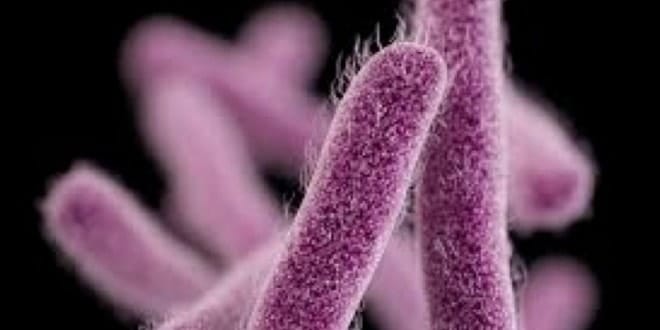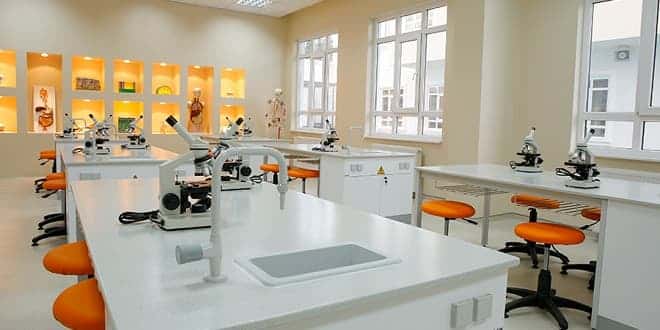Genel Mikrobiyoloji
-

Kırmızı Algler (Rhodophyta) ve Biyoteknolojik Özellikleri ( Mehmet YANAR )
KIRMIZI ALGLER (Rhodophyta) VE BİYOTEKNOLOJİK ÖZELLİKLERİ Morfolojik Özellikler Kırmızı Alglerin Önemli Özellikleri Kırmızı alglerin en önemli özelliklerinden birisi, sperm hücreleri dahil, hiçbir hücrenin kamçı taşımamasıdır. Yaprak şeklinde gelişmiş tallusları bulunur. Bazı türlerinde, hücre duvarlarında kalsiyum karbonat depolanır. Bu türlerden oluşan resifler, dalgaları keserek, içlerinde yaşayan canlılara korunak sağlar. Bazılarının pektin yapılı hücre çeperlerinden “agar agar” adı verilen polimer yapılı musilaj jel elde edilir. Besin ve ilaç endüstrisinde kullanılan türleri de vardır. Kırmızı Alglerde Sınıflandırma Porphyra 2-FLORİDAEOPHYCIDAE (FLORİDAE) Floridae Floridae Grateloupia sp. Agar agar ‘ın Kullanım Alanları Company Name Carrageenan ‘ın Kullanım Alanları…
-

Laboratory > Antimicrobial Agents
1. How would you determine if a zone of inhibition was due to the bacteriocidal (killing) or bacteriostatic (growth inhibiting) action of an antimicrobial? 2. Sometimes, one observes a few bacterial colonies growing within a zone of inhibition. How would you explain this? How would you conclusively prove your hypothesis? 3. How do antibiotics differ from other natural products of microbes such as lactic acid, acetic acid, ethanol and others? 4. How are new antibiotics discovered? What properties must they possess in order to be more desirable than previously discovered antibiotics? ….
-

Laboratory > Effect of Temperature on Growth of Microorganisms & Osmotic Pressure
355-EFFECT OF TEMPERATURE ON GROWTH OF mos EFFECT OF TEMPERATURE ON GROWTH OF MICROORGANISMS & OSMOTIC PRESSURE FATİH KOCABAŞ 09/12/2005 1274661 GENE Friday Group : 07 Purpose: To know how to control bacterial growth physically To be able to learn that each organism have an optimum temperature at which growth rate at the highest level To be able to recognize that temperature has a big affect on bacterial enzymes To be able to determine thermal death point and thermal death time for microorganisms To be able to explain heat-resistance differences…
-

Laboratory > Growth of Bacteria
Liquid media such as broth become cloudy if bacteria are present. This could be the result of only one bacterial cell originally entering the medium, then dividing repeatedly to produce millions! Bacteria on agar “plates” become visible as distinct circular colonies; each colony should represent an individual bacterial cell (or group) which has divided repeatedly but, being kept in one place, the resulting cells have accumulated to form a visible patch. …
-

Laboratory > Stain Protocols
Stain Protocols – BIOL 2420 Simple Stain Simple stains provide a quick and easy way to determine cell shape, size, and arrangement. 1. Perform a bacterial smear, as discussed in Figure 3-52 on page 150 of your lab manual. 2. Saturate the smear with basic dye for approximately 1 minute. You may use crystal violet, safranin, or methylene blue. 3. Rinse the slide gently with water. 4. Carefully blot dry with bibulous paper. 5. Observe the slide under the microscope, using proper microscope technique. Negative Stain Negative staining is an…
-

Laboratory > Sterilization of Media
When fungal spores or bacteria-laden microscopic particles make contact with your plates, broths, and tubes colonies happily reproduce and your precious media eventually resemble something out of an abandoned full refrigerator. One can’t recognize individual colonies when the plates are covered with fuzz! No untreated surface in the lab is sterile, and nearly all dust and other particles have spores or active cells on their surfaces. Obviously, then, all labware and all media must be sterilized before use. Sterilization can be accomplished in several ways including the use of moist…
-

Laboratory > The Gram Stain and Simple Stain Smear
FE204 Microbiology Lab report The Gram stain and simple stain Smear Purpose Preparation of smear and application of simple stain to observe size,shape, arrangement, color of the microorganisms using oil immersion objective.And application of differential staining method and classify microorganism as Gram positive, Gram negative. Theory Material • Crystal violet • Safranine • Distilled Water • Iodine • Alcohol • Bibulous paper • Microscope • E.coli in Nutrient broth culture • Sterile Glass slide • İnoculating loop • Forcep • İmmersion oil • Bunsen burner • Xylol • …








